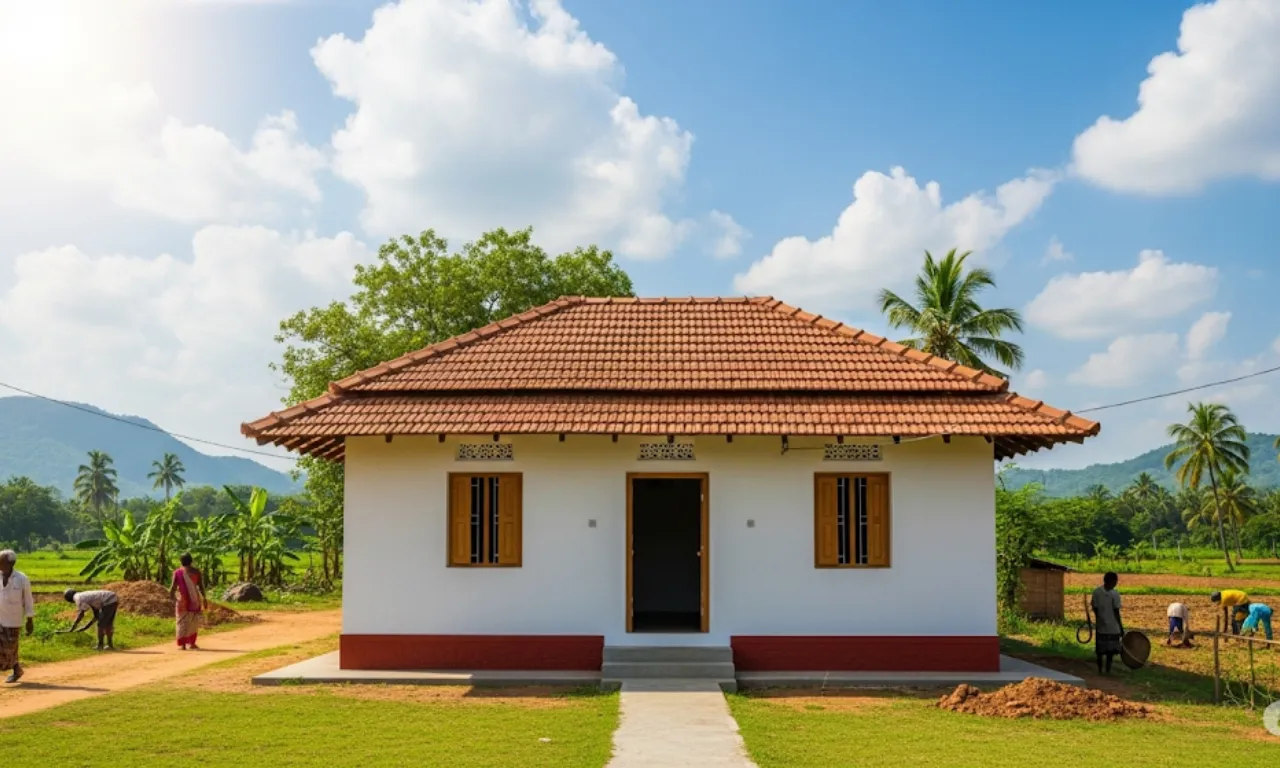- Target of 4.12 crore houses set by July 2025 under Pradhan Mantri Awaas Yojana-Gramin (PMAY-G).
- 3.84 crore beneficiaries approved houses; 2.81 crore houses completed so far.
- Mandatory geo-tagging via AwaasApp for site verification and installment release ensures clarity and monitoring.
Pradhan Mantri Awaas Yojana-Gramin (PMAY-G) continues to be a main scheme focused on providing pucca houses with basic amenities to eligible rural households across India. Started in 2016, this scheme uses detailed housing deprivation parameters primarily from the Socio-Economic Caste Census (SECC) 2011 and the Awaas+ survey to identify beneficiaries. Knowing its progress and eligibility criteria can help you understand how rural housing development is shaping up with this government scheme.
Eligibility and Beneficiary Identification for PMAY-G
People chosen under PMAY-G are selected using clear criteria focused on housing deprivation. The scheme targets rural households lacking pucca houses (solid, permanent structures) and essential amenities. Selection is mainly based on the Socio-Economic Caste Census (SECC) 2011 database combined with the updated Awaas+ survey list, which together make sure only genuine beneficiaries get housing support.
Housing Deprivation Parameters and SECC Database Usage
SECC 2011 offers a key framework to identify deprived households by checking important factors like housing type, access to clean water, sanitation facilities, and overcrowding. Eligible rural households are those without a pucca house or with houses missing basic facilities. The Awaas+ survey is a live list that updates and confirms household data from SECC to keep the beneficiary identification accurate and trustworthy.
Targets and Achievements of PMAY-G as of 2025
As of 29 July 2025, the Ministry of Rural Development has set a total target of 4.12 crore houses under Phase I and Phase II combined. States and Union Territories have already approved houses for 3.84 crore beneficiaries. Out of these, about 2.81 crore pucca houses have been finished, showing strong progress towards the governments goal of rural housing for all.
Phases and Scope of PMAY-G for 2016-2029
PMAY-G began in April 2016 with an initial target of constructing 2.95 crore houses during 2016-17 to 2023-24. Seeing the continued housing needs, the government later approved an extension from 2024-25 to 2028-29 to build an extra 2 crore houses, aiming to cover all eligible rural households. This phased plan allows better use of resources and focused action to reach the goal of “Housing for All” by 2029.
Geo-Tagging and Monitoring Process Using AwaasApp
Clarity and accountability are key parts of PMAY-G, helped by the AwaasApp. It requires geo-tagging with time and date stamps at every major step of house construction, including at the existing and proposed sites before approval. This makes sure funds are given only after confirming site readiness and construction stages.
As of July 29, 2025, 3.84 crore house sites have been geo-tagged using the mobile app. This digital monitoring lets the Ministry of Rural Development track progress in real time, making sure public funds are used properly and lowering the chances of fraud.
This recent update was shared by Minister of State for Rural Development, Shri Dr. Chandra Sekhar Pemmasani, in a written reply to the Rajya Sabha on August 1, 2025.
| Parameter | Details |
|---|---|
| Scheme Implementation Start | 1 April 2016 |
| Initial Housing Target (2016-24) | 2.95 crore houses |
| Additional Housing Target (2024-29) | 2 crore houses |
| Cumulative Target (Phase I + II) | 4.12 crore houses |
| Sanctions Given | 3.84 crore beneficiaries |
| Completed Houses | 2.81 crore houses |
| Geo-Tagged Sites | 3.84 crore (as on 29 July 2025) |
| Official Monitoring App | AwaasApp by Ministry of Rural Development |
If you or someone you know qualifies for the PMAY-G scheme, it is a good idea to check with your local rural development office or visit the official Ministry of Rural Development website to clearly understand the application process and benefits.

